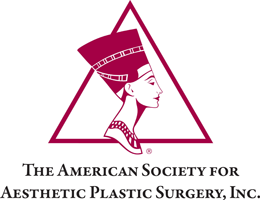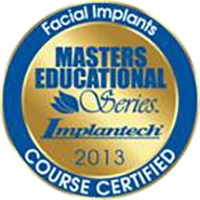Changing the dimensions of the forehead is done mainly for aesthetic purposes or correction of deformities as a result of birth defects, such as craniosynostosis (premature closure of cranial fusion lines). “Pinhead”, and “squarehead” are just a few derogatory terms used to describe people with differently shaped skulls. Unfortunately, these terms can have a profound impact on a child’s self-esteem, and psychological development. These terms can also impact an adult as well in many ways.
What is a Forehead Implant?
Forehead implant surgery helps change the shape and size of your forehead. The shape of the skull is also different in males and females. For women, a more curved and softer forehead is common, while men usually have a broader and taller one with a receding hairline. People often use these differences to figure out someone’s gender without even realizing it.
During this surgery, surgeons can use implants to make your forehead look different. They might put in an implant or use fat from your body to add volume to your forehead.
Overall, it’s a way to make your forehead look how you want it to, whether you want it more rounded or broader, and it’s something that can help change how people see your gender.
A Good Candidate for Forehead Implant
If you have a narrow forehead and want to balance your facial structure, forehead augmentation could be a viable option. However, before making any decisions, it’s essential to prioritize your health and have realistic expectations about the results. Understanding the potential risks like infection, scarring, or dissatisfaction with the outcome is crucial before moving ahead with the procedures.
It’s important to consult an experienced and board-certified plastic surgeon Dr. Shahin Javaheri, who specializes in facial augmentation. They can assess your situation, explain the options available, such as implants or fillers, and discuss the potential risks and benefits with you. Keep in mind that thorough research and open communication with your surgeon, Dr. Shahin Javaheri, can help you make an informed decision. Always prioritize safety, and your desired outcomes, and understand the procedure’s limitations to achieve the best possible results.
Preparation for Forehead Implant
It is important to have a thorough discussion with plastic surgeon, Dr. Shahin Javaheri, before undergoing forehead augmentation. This includes establishing surgical goals, discussing medical history, and potential risks and complications. The surgeon will also conduct a thorough health evaluation, typically including blood tests (CBC, electrolytes, HIV, Hep B, Hep C), and possibly a chest X-ray to ensure your safety during the procedure.
Before surgery, it is advised to avoid aspirin, anti-inflammatory medications, and herbal supplements for at least two weeks, as they can increase bleeding and bruising risks. It is crucial to stop smoking for at least two weeks before the procedure to optimize healing and reduce complications. Additionally, it is recommended to fast from food and drink for at least six hours before surgery for safety during anesthesia.
Following these guidelines enhances safety and improves the likelihood of a successful procedure and smoother recovery. Adhering to Dr. Shahin Javaheri’s instructions diligently ensures the best possible conditions for forehead augmentation, minimizing risks and optimizing your outcome. Always prioritize open communication with your medical team and follow their guidance to ensure a safe and effective surgical experience.
It is not unusual to perform a pre-operative 3D CT scan to determine an exact shape that a patient desires. The desired shape is frequently shared with the patient to determine the final shape of the skull (forehead or other areas) prior to surgery.
Forehead Implant Procedure
Forehead implant surgery is a procedure that involves the use of general anesthesia to ensure the patient’s comfort. During the surgery, a small incision is made behind the hairline. The surgeon then carefully creates a space for the forehead implant and shapes it to fit snugly over the underlying forehead bone. The surgery involves the meticulous placement of the implant to achieve the desired augmentation. Once the implant is in position, the incision is carefully sutured, and a compression bandage is applied to the forehead to provide support and reduce swelling.
After the surgery, it is essential to follow the surgeon’s aftercare instructions for optimal healing. This includes keeping the area clean, avoiding strenuous activities, and attending follow-up appointments to monitor progress. By understanding and adhering to the recommended recovery guidelines, you can significantly contribute to achieving the desired results and minimizing potential complications.
Aftercare Guidelines for Forehead Implants: Promoting Healing and Long-Term Health
After undergoing forehead implant surgery, it is essential to prioritize proper post-operative care to ensure a smooth recovery. It is crucial to avoid any strenuous activities for three to four weeks to allow the area to heal without any undue stress. Applying ice compresses to the forehead for 20-minute intervals in the initial days after surgery helps reduce swelling and discomfort. Additionally, keeping the head elevated for 1-2 weeks can minimize post-operative swelling.
It is crucial to diligently follow your surgeon’s specific post-operative instructions to ensure a smooth recovery. This includes attending follow-up appointments, keeping the surgical site clean, and reporting any unusual symptoms or concerns promptly. Committed adherence to these guidelines optimizes healing and supports the achievement of desired results.
Risks and Complications of Forehead Implants: Navigating the Potential Challenges
If you’re considering forehead, or other areas of the skull, augmentation, it’s important to be aware of the potential risks involved. However, when done by Dr. Shahin Javaheri, the procedure typically involves few complications. Some of the possible risks include infection from the implant, fat graft, or incision area; internal bleeding, also known as hematoma; implant shift, which can sometimes be fixed with screws; poor scarring or healing; post-surgery bleeding; temporary numbness in the forehead and scalp near the incision; and anesthesia side effects (although these are rare).
While these risks are minimized with proper care and a skilled surgeon, it’s still important to follow post-operative instructions carefully and communicate any concerns promptly. Most complications will resolve with time, but discussing potential risks with your surgeon beforehand can help manage expectations and ensure that prompt action is taken if any complications do arise.
Recovery Process for Forehead/Skull Implant(s)
After undergoing forehead/cranial augmentation, it is generally safe to return to work after two weeks. However, it is important to avoid heavy exercise for at least a month. Your appearance will closely resemble the final result within a month after the surgery. However, you will see the complete outcome as residual swelling diminishes, which usually takes around three months. To ensure a smoother recovery process and achieve the best possible long-term outcome, it is crucial to follow post-operative instructions and allow ample time for healing.
Conclusion: Embracing Diversity in Self-Expression
Forehead/cranial implants, although unconventional, represent the diverse ways in which individuals seek to express themselves. Whether seen as an artistic statement, a technological integration, or a means of personal empowerment, these implants serve as a canvas on which individuals project their uniqueness and individuality.
In a world where self-expression takes many forms, forehead implants stand as a testament to the ever-evolving nature of human creativity. While sparking debates and raising questions, they reinforce the fundamental human desire to assert individuality and reimagine the boundaries of self-expression.
In conclusion, the realm of forehead implants invites us to contemplate the intricate relationship between body modification, technology, and personal identity. It is a phenomenon that challenges norms, sparks conversations, and ultimately underscores the beauty of diversity in human expression.
“Where Art Meets Anatomy: Forehead Implants Redefine Expression!”




